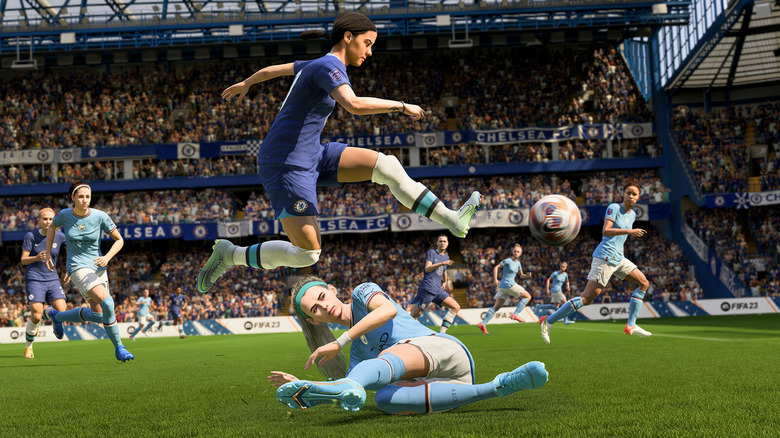FIFA 23: The Changes To Ultimate Team Chemistry Explained
"FIFA" fans are looking forward to the upcoming release of "FIFA 23" on September 30, marking the official end of the series as EA parts ways with FIFA and rebrands the franchise. This final entry promises the same sports gameplay that gamers have come to love, along with some new features and updates. For example, cross-play will be available at launch for the first time (albeit with certain restrictions), and the game's Ultimate Team mode is getting some changes.
Among these changes are tweaks to Ultimate Team's chemistry mechanic. This feature, utilized to reflect how well a team works together, is an important aspect of the Ultimate Team mode. Good chemistry is a vital part of maximizing any team's potential. As a team's chemistry increases, individual players will see improved stats, playing better as the group becomes more in sync.
While the core idea of chemistry will remain the same in "FIFA 23," EA has made some tweaks. According to a previous Pitch Notes update, these changes are intended to make it easier to gain chemistry with different team compositions, encouraging experimentation with a wider variety of players.
Earning chemistry in FIFA 23
Notable changes have been made to how chemistry is earned and measured in "FIFA 23." As Dexerto notes, in the past, "FIFA 22" measured chemistry on a numbered scale. Chemistry is represented by stars in "FIFA 23," with three-star chemistry being the best possible. The more stars, the higher the team's chemistry, and the better players will perform.
Increasing chemistry will be a matter of having players from the same club, nationality/region, and league on a team's starting 11 players. In addition, more matching players and crossing certain thresholds will increase the number of chemistry stars. For example, two players from the same club may only be worth one star, while five players from the same league can be worth two after different bonuses add together.
Chemistry level and individual player style will still determine what stats a player gets bonuses to and how large these bonuses are, but squad chemistry and the loyalty system have been removed. Instead, the focus will now be on maximizing team chemistry and then raising the chemistry of each player separately. Personal links have also been removed, and players can now link with any other on the field. These changes should allow for much more flexibility when putting together a team.
Benefits of chemistry in FIFA 23
Minor changes have also been made to the effects of chemistry, making it slightly more forgiving and rewarding high chemistry as opposed to penalizing low chemistry.
While higher chemistry will still increase player stats, low chemistry will no longer cause a stat decrease. So, while building a team, gamers can now trust that a player will have at least the stats listed and that chemistry won't cause any reductions. That said, players can still benefit from boosted stats after increasing chemistry.
It's also important to note that chemistry and its bonuses are locked in once a match begins. So substituted players will not benefit from chemistry, playing with their regular stats. Further, changing formations, tactics, or positions will not raise or lower chemistry during the game.
It remains to be seen how fans will react to these changes or if they will produce the flexibility and team diversity EA hopes for. Regardless, mastering the new system will be an important challenge for any player looking to become a "FIFA" champion.



